A very original plant, which has earned the love of gardeners for its beauty and seemingly living, moving leaves, is a mimosa bashful. As early as 1729, the astronomer de Mayron suggested that the movements of the leaves of a plant have something in common with the rhythm of the human body.
Material Content:
Plant description
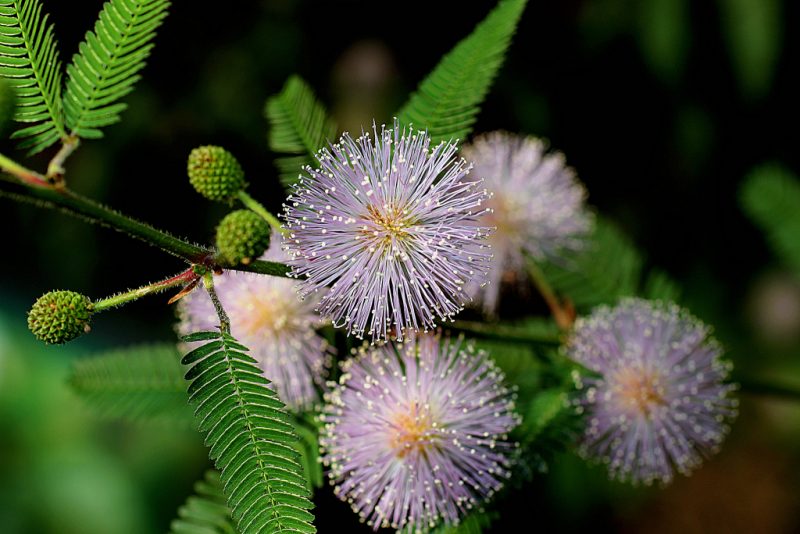
Mimosa refers to herbaceous plants. This culture is both medicinal and decorative. It reaches a height of 70 cm, has complex leaves that are very sensitive to touch - they fold, creating the illusion that the plant is ashamed. For this amazing feature, the flower is called bashful.
On the stems of the flower there are thorns bent down. The flowers look like small balls of delicate, pink color. Mimosa bloom is very elegant. The fruit of mimosa is a bean.
Features of growing bashful mimosa
Mimosa pudica is a fairly unpretentious plant, despite its exotic origin. Caring for a flower at home is not so complicated as it might seem to an inexperienced grower at first glance.
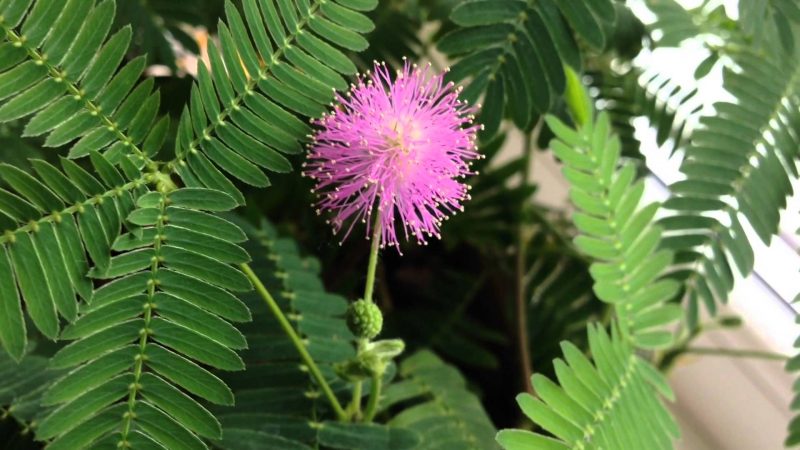
The main feature when growing a flower is that it does not tolerate cigarette smoke at all, and can immediately drop the leaves.
The plant loves warmth very much and from early spring to late autumn it grows well only at a temperature of +24 ºС. In winter, the flower needs a decrease in temperature to +16 ºС.
Home Care
Growing a plant does not cause much trouble, but this green "pet" still requires the implementation of certain rules for care.
Optimal conditions for growing
Mimosa bashful flower loves bright light. It’s great if the flowerpot stands on the south window, as this plant prefers direct sunlight. But on hot days, when the sun is too active, it is better to shade the flower at noon. It is necessary to take into account the fact that in winter this photophilous plant does not like artificial illumination.

Culture does not tolerate drafts and wind, so you can not open the window in the room.
Watering and spraying
The mimosa bush loves moisture very much, but it needs to be watered carefully. In the summer, the flower is watered abundantly, but be sure to drain the highest water from the pan. In cold weather, watering is reduced, but make sure that the earthen lump does not dry out too much in the flowerpot. Due to waterlogging of the soil in the cold season, the flower may become sick and lose its decorative effect.
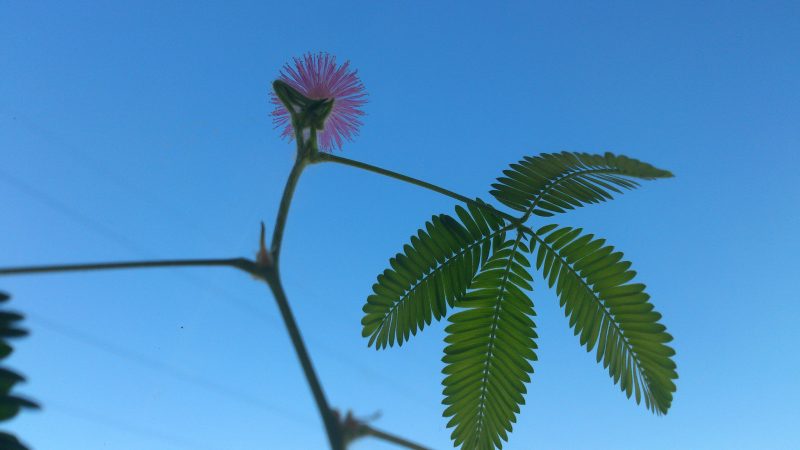
In the summer, in the evening or in the morning, the flower is sprayed. You can not carry out this procedure in direct sunlight.
For irrigation and spraying use only well-maintained or distilled water.
It is quite enough in the summer to water the flower every other day. The growth period in mimosa begins in March, at which time watering is also increased. Continue this until October, until the plant begins to enter the dormant phase, preparing for winter. A hint for watering is a dry soil that you must touch with your fingers.
Fertilizer and fertilizer
The approach to choosing a nutritional composition for shy mimosa fertilizer should be standard. They begin to fertilize the plant in the spring, making fertilizing every two weeks. Continue the procedure in the same mode until late autumn. The fertilizer rate, which is indicated in the instructions, for irrigation, the mimosa is diluted with water twice.
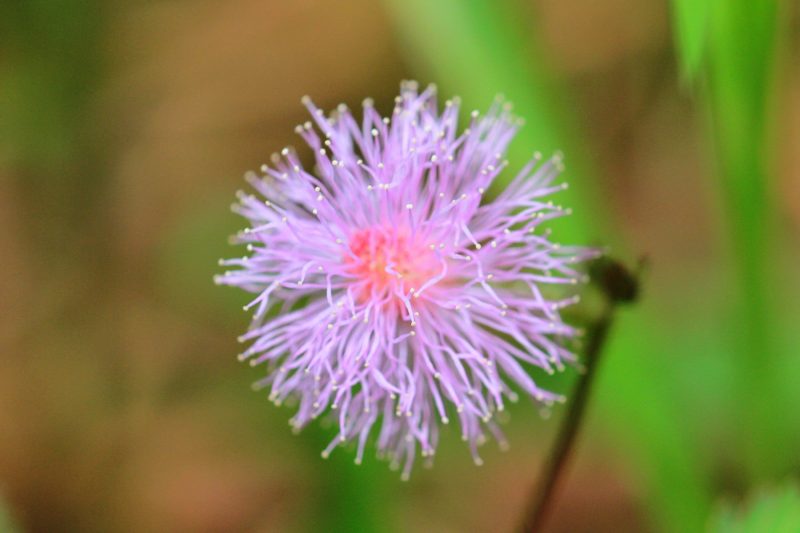
As fertilizing, use conventional fertilizers for flowering. Organomineral formulations are excellent. It is not necessary to search for any special fertilizers.
Cropping and shaping the crown
This flower constantly needs to be updated. The plant is fast-growing, and should be replaced annually with bushes that have been grown from seeds. If the culture is grown like bonsai or they want to keep it for the next year, then only radical pruning can help.
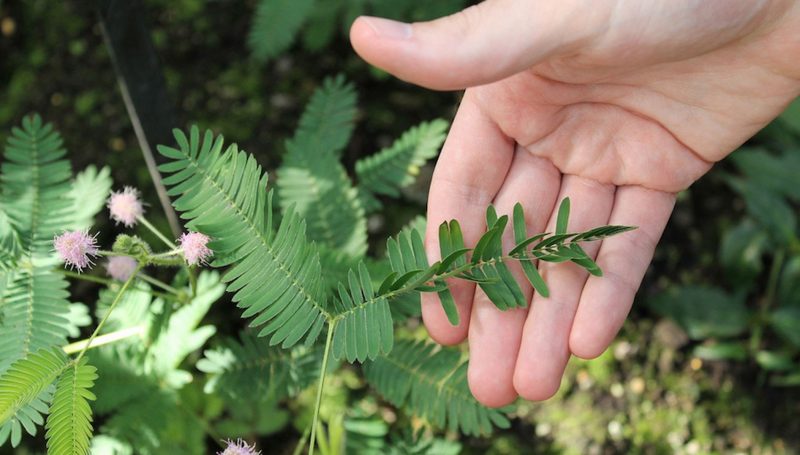
It is carried out immediately after wintering, although this procedure is acceptable after flowering. All strongly elongated branches are cut to hemp, focusing on the desired shape of the crown. Old branches need to be shortened so that the young shoots form a decorative “hat”.
When forming a bonsai, such pruning is carried out several times a year, limited to lignified shoots. In fact, the formation of the crown of a mimosa bashful is the constant cutting of the bush to the desired size.
A very important stage is sanitary pruning. When the shoots begin to dry, they are removed, and this should be done as soon as possible, until the plant dropped leaves in protest.
Transplant Rules
Growing mimosa for several years implies that the plant will be transplanted. At least this applies to old flowers and bonsai. The procedure is carried out in early spring. But it is advisable, without the need, not to touch the flowers growing in a permanent place.
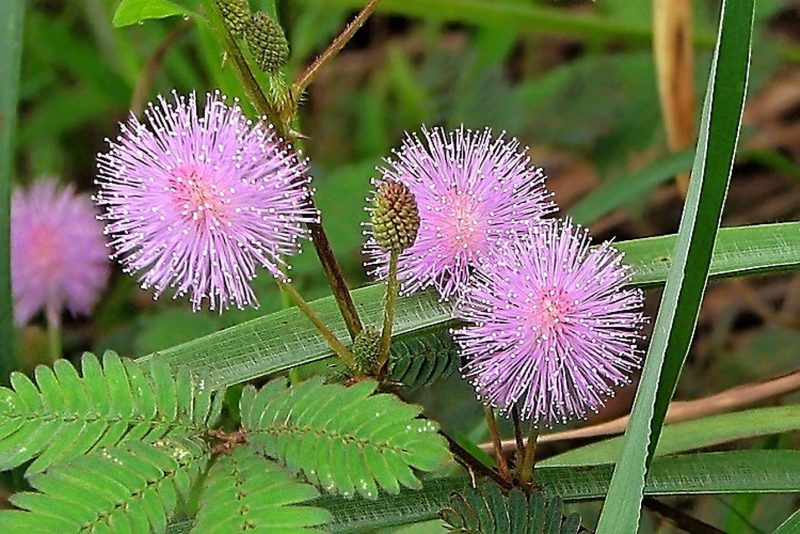
For cultivation use the usual universal soil with neutral indicators of acidity and alkalinity. The main thing is that it should be well permeable by air and water. Preparing the soil mix for transplanting on their own, mix the turf, leaf soil and peat in equal parts, and add a little sand.
The plant is not even transplanted, but very carefully transferred along with a lump to another flowerpot. Only the most contaminated, topsoil layer is removed. Be sure to make a sufficiently high drainage in the pot.
The rhizome of mimosa is very difficult to tolerate contacts, and pruning during transplantation is generally contraindicated for it.
Protection against diseases and pests
If you provide shameful proper care for the mimosa and create suitable conditions for it, the plant will not hurt. With good lighting and sufficient humidity, the flower can even be called persistent. But sometimes problems can still arise, as well as pests - aphids and spider mites. They begin to fight insects immediately, treating the flowers with insecticides and collecting pests manually.

Growing problems:
- Due to the high humidity, the leaves may be permanently closed.
- At low temperatures, the plant will not bloom.
- With poor lighting, the mimosa will not bloom either.
- In the shade of the mimosa, the shoots can be pulled too much.
- In a polluted environment, the flower simply discard the leaves.
- Mimosa will react to the drying of the earth in the same way.
If a flower begins to lag sharply in growth, and its leaves take on the most bizarre forms, it means that the disease struck the culture. Usually a mimosa plant bashful gets sick due to pests. Therefore, the first thing you need to inspect it for the presence of uninvited guests.
- If the mimosa leaves begin to stretch out too much, this is the first signal that the pot is in a poorly lit place. A simple solution to the problem is to rearrange the flowerpot onto the window on the south side.
- Sometimes, mimosa leaves do not open. If the plant constantly receives too much water, then this will certainly affect its appearance. This problem can also occur if the room is too cold, which often happens in winter.
- The plants may become yellowish and sluggish leaves due to lack of water. It is very important to correctly observe the watering regime - the flower does not like either stagnation of moisture or drying out. You can humidify the air around the flowerpot in the heat by spraying it from the spray gun.
It is interesting:diplomas at home
Seed propagation
To collect seeds, you must first pollinate the flowers. In nature, insects or the wind do this. At home, the procedure is carried out manually using a soft brush. Just pollen is transferred from one flower to another.
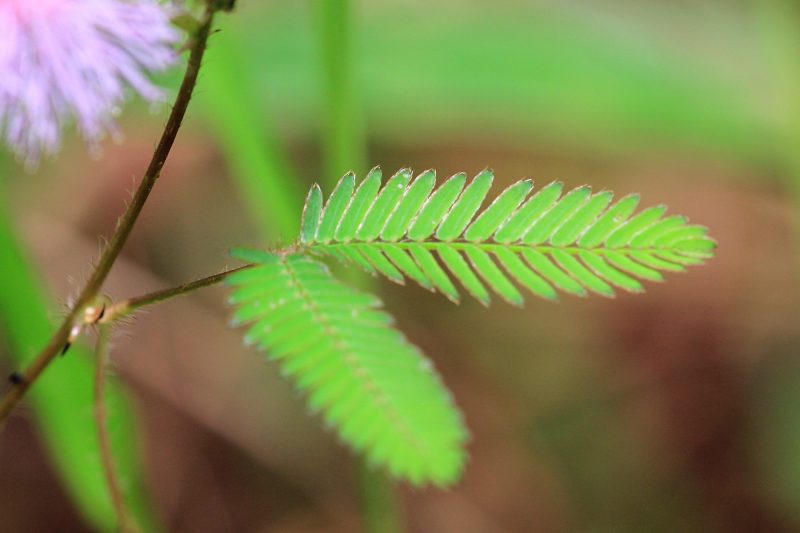
The easiest way to grow mimosa is from seeds that can be taken from other growers or bought. The fruit of the flower is a pod with several peas.
- When the shell is completely dry, the pods are laid in the refrigerator for the whole winter.
- In March, they begin planting, before which planting material is soaked in water for half an hour. For sowing, the usual universal soil is quite suitable. Garden soil does not fit, as it has a lot of germs.
- Sown in small containers, at the bottom of which they arrange drainage. You can use expanded clay in this quality.
- The soil mixture is well shed, and then peas are spread on its surface.
- 1 cm of soil is sprinkled on top of them.
- Capacities are tightened with a film to make a mini-greenhouse.
- Seeds are transferred to a warm place where the air temperature is about +30 ºС. Water only through the sprayer.
After 20 days, the first shoots will appear. Then the plates are exposed, but not in direct sunlight. The temperature in the room should not be lower than +24 ºС.
When three leaves appear, the seedlings are transplanted into separate containers using universal soil. When picking, you need to protect the delicate roots. Further care for young plants is no different from adult care.
Why bashful mimosa leaves collapse
This is an amazing fact, but the leaves really curl up at the slightest touch. Why is this happening?
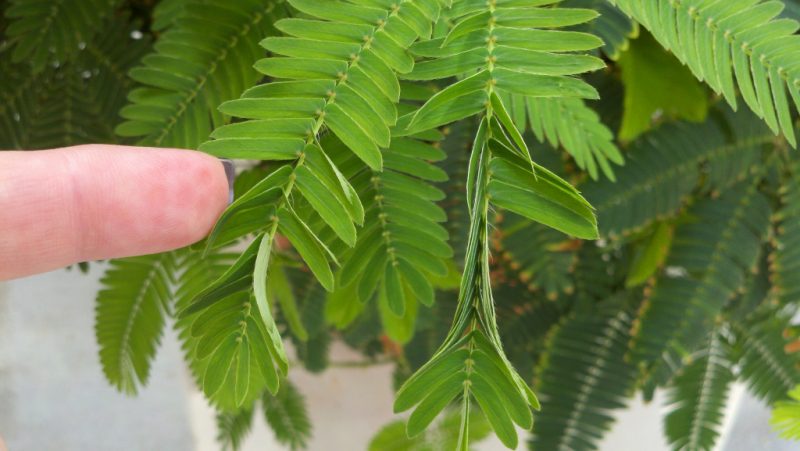
Upon contact, the leaves alternately fold inward - so the flower protects itself from predators. After two to three minutes, they again straighten. This ability of the flower also helps it to dump pests - various insects.
However, many plants, which are called seismic, have a similar mechanism of self-defense. Leaf tissues lose turgor, and during contact, a sharp release of potassium occurs, which causes the outflow of water from the cells.This leads to compression - the leaves immediately curl up and the petiole drops slightly.
It is important to place the pot so that small children cannot reach the mimosa. A flower moving leaves often becomes an interesting toy, but a plant spends a lot of energy on such a movement, and it can even die if it is exhausted.
Finally, I must say that people with allergies, it is undesirable to keep this plant at home. Mimosa pollen can cause a very violent reaction of an allergy-prone organism.
Although it may seem that it is very difficult and painstaking to grow a bashful mimosa at home, in fact, it is not. Even a beginner grower can cope with the cultivation of this flower, with a certain amount of zeal and respect for this reverent creation of nature.












